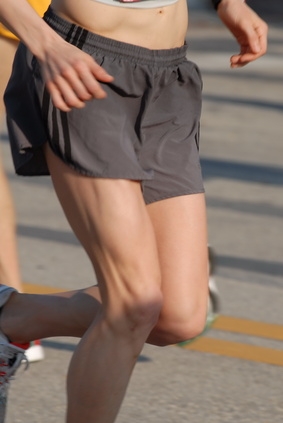
:dropcap_open:S:dropcap_close:uccessful doctors treat the cause of the problem, not the symptoms. They are able to quickly and accurately determine the source of thepatient’s stress, devise a plan of treatment, and confidently convey their findings to the patient. They specialize in helping problem cases—the ones no one else can help. They solve these cases by identifying the specific cause(s) of the patients’ symptoms that have not been identified elsewhere.
So allow me to ask you, what tests do you perform in your office that other practitioners do not? Oddly enough in my years of lecturing, I have discovered that very often the quickest and simplest physical tests are not routinely used. Yet it is these very procedures that reveal hidden sources of stress that prevent correction.
One incredibly important area of concern in our profession is the finding of unequal leg length not related to fracture or surgery. Such a finding is the source of continual stress on the body whether standing or sitting. It is imperative that the cause of this inequality is found and corrected if we are to expect satisfactory therapeutic results. So with that preamble in mind, I will begin the first of a three-part series on a convenient screening examination you will find useful regardless of your office procedure.
The Short Leg Syndrome
Inequality in the length of the legs is a continual stress to the body and undermines virtually any other condition the patient may have.
Studies have consistently and repeatedly shown the following statistics for the prevalence of short legs in an asymptomatic population:
71 percent of the population has a leg deficiency of 1/16”
33 percent of the population has a leg deficiency of 3/16”
4 percent of the population has a leg deficiency of 7/16”
3/16” to 1/4” of leg deficiency is considered to be sufficient to produce low back pain
However, it should not be assumed that any leg deficiency is permanent. Unless there is a past history of surgery or fracture in the lower extremities, these inequalities should be considered as functional and can be corrected with specific exercises.
The Supine Examination
Standing at the patient’s feet, we can quickly determine structural stress coming upward from the legs. We will describe, in order, the Allis Test for determining the short leg, examination for a long 2nd toe or Morton’s Syndrome, internal and external hip rotation fixations, and ankle fixations. All of these problems, if overlooked, will render your therapy ineffective for lasting correction.
While lying supine, have the patient bend their knees and place the soles of their feet flat upon the table. Determine that the feet are properly aligned to each other at the heels.
Problems Above the Knee
Place your hands on the front of the knees, over the patella and compare. The hand closest to the pelvis indicates that the cause of the short leg probably is in the hip. We then check for limited hip range of motion, in particular, limited internal and external fixations.
:quoteright_open:So allow me to ask you, what tests do you perform in your office that other practitioners do not?:quoteright_close:
Have the patient straighten their legs. Stand at their feet and cup the heels in the palm of your hands. Raise the legs off the table slightly and rotate the legs first inward and then outward. Compare the rotation of one side and then the other. Restriction indicates muscle and ligamentous contraction and also indicates probable rotation of the ilium on the sacrum.
Limited Internal Rotation indicates the ilium is fixated in internal rotation on the sacrum. I recommend palpating the medial thigh, medial surface of the tibia (where the deep fascia attaches) and the medial surface of the calcaneus to locate a possible source of stress.
Limited External Rotation indicates the ilium is fixated in external rotation. I recommend palpating the lateral thigh, the lateral fibula, and the lateral surface of the calcaneus to locate a possible source of stress.
The astute clinician will recognize that any leg restriction described above is a function of the sacral base angle and side of weakness that we examined in earlier articles. This test is used to ascertain chronicity and involvement of the hip joints. The knee is not being tested specifically here, because there is no rotation in the knee joint when the knee is locked in extension, as it is when we perform this test. Nevertheless, this test is useful in determining a prognosis of knee and hip degeneration:
Prolonged fixation in internal rotation leads to knee degeneration due to compression stress on the knee.
Prolonged fixation in external rotation leads to hip degeneration due to shearing stress on the hip.
Problems Below the Knee
Next, place your hands on top of the knees and compare the height. The low knee indicates the cause of the short leg is probably in the ankle. While we still have the patient with their knees bent, we move our attention to their toes, looking for the presence of a bunion, but also the length of the toes.
Next month we will continue our examination of the lower extremities and look at the feet and ankles.
